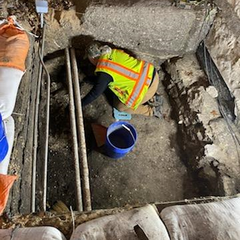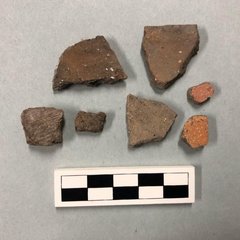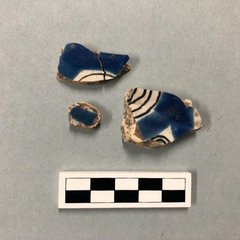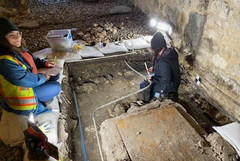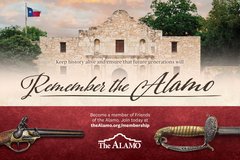During the week of January 13, 2020, work continued with the installation of the safety bollards around the perimeter of Alamo Plaza. The steel bollards are being installed in the excavated areas and secured in place with the pouring of concrete. In areas that the concrete has been poured, the next phase of work would focus on installing the flagstone surface.
Archaeology associated with the preservation work for the Church and Long Barrack focused on units on the south and north sides of the Church. Excavation Unit 01, located on the south side of the Church, has worked on exposing a kick-out of the foundation below the metal monel plate that was installed in 1995. As the archaeologists have progressed with their excavations, they have encountered a compacted caliche surface similar to what was observed in the exterior unit located to the west.
The artifacts that have been encountered in the vicinity of the compacted surface have mostly been associated with the early colonial occupation of the site. These artifacts consist of chert flakes, Native American-made pottery known as Goliad Ware, and Spanish Colonial ceramics, including Puebla Polychrome. Puebla Polychrome is one of the oldest types of majolica that has been encountered at the site. These artifacts, in combination with the compacted surface, appear to indicate that we have evidence of the earliest use of the location for the Spanish Colonial mission.

